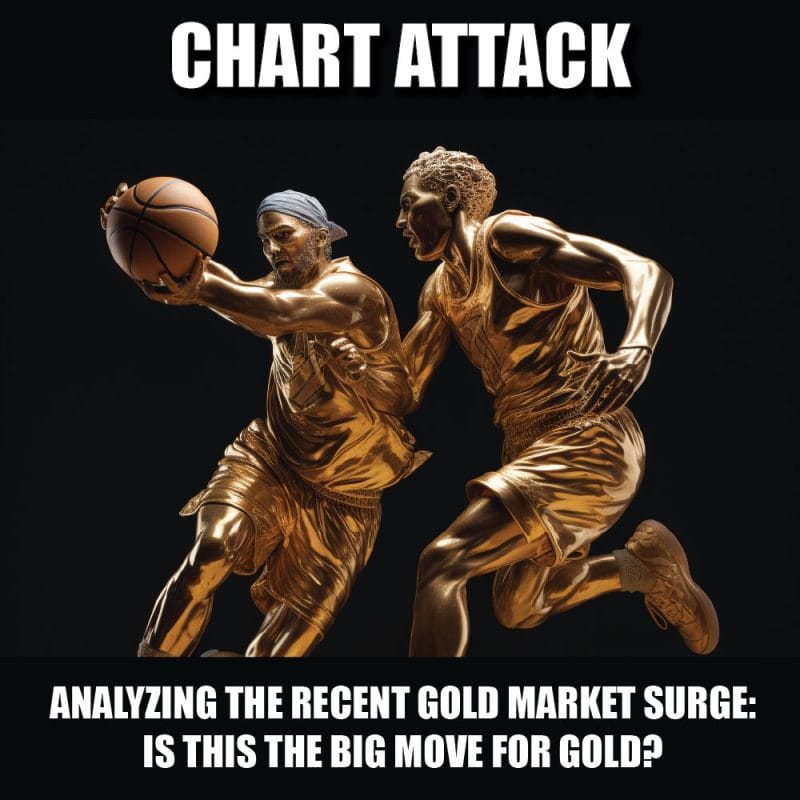The gold market has experienced significant movements recently, leaving investors and traders wondering if this is the beginning of a major bullish trend. Vishal Toora, a renowned technical analyst, shares insights into the current state of the gold market and discusses the factors influencing its price. In this article, we dive into Vishal Toora’s analysis, examining the correlation between gold and the US dollar, as well as the impact of interest rates and inflation. Join us as we explore whether this surge in the gold market is indicative of a long-awaited breakthrough or simply a reaction to external factors.
To begin with, it is essential to understand the correlation between gold and the US dollar. Historically, when the US dollar weakens, gold tends to rise, and vice versa. Vishal points out that the recent breakdown in the US dollar chart has been a key factor contributing to the surge in gold prices. As the US dollar index (DXY) closed below the psychological support zone of 100, gold found renewed strength.
However, Vishal cautions that the recent surge in gold prices might not be solely driven by bullish sentiment in the gold market. He highlights the importance of considering other gold markets and their performance against different currencies. While gold has shown strength against the US dollar, it is crucial to examine its performance against currencies such as the Australian dollar, Canadian dollar, Swiss franc, Euro, and British pound. Vishal notes that gold’s rise against the US dollar does not necessarily indicate a bullish move for gold as a whole.
Factors such as interest rates and inflation play a significant role in shaping the gold market. Vishal emphasizes the need to assess the impact of nominal and real interest rates on gold’s performance. When interest rates rise, bond yields tend to increase, making them more attractive to investors seeking returns. This scenario can negatively impact gold, which does not yield anything. On the other hand, if real interest rates are negative, with inflation factored in, gold becomes more appealing as an investment.
Recent economic data, such as the US Consumer Price Index (CPI) coming in lower than expected and weaker-than-anticipated Non-Farm Payroll (NFP) numbers, has led the market to speculate about the Federal Reserve’s rate hike policy. While a 25 basis point rate hike is expected at the July meeting, the overall sentiment is leaning towards a dovish approach from the Fed. This anticipation of a potentially more accommodative monetary policy has contributed to the bullish sentiment surrounding gold.
Looking ahead, Vishal points out an upcoming event that could impact the gold market significantly. The BRICS nations (Brazil, Russia, India, China, and South Africa) are reportedly planning to introduce a trading currency backed by gold. This development, if realized, could lead to increased demand for gold and potentially influence its price worldwide. Central banks stocking up on gold and nations repatriating their gold reserves from US and British vaults further indicate a growing interest in the precious metal.
In conclusion, the recent surge in the gold market has sparked excitement among gold bugs and gold bulls. Vishal Toora’s technical analysis provides valuable insights into the factors influencing gold prices. While the breakdown in the US dollar has played a significant role, it is crucial to consider other gold markets and their performance against various currencies. Additionally, factors such as interest rates, inflation, and geopolitical events like the BRICS nations’ potential introduction of a gold-backed currency can shape the future of the gold market. As the market continues to evolve, traders and investors should closely monitor these factors to make informed decisions.

